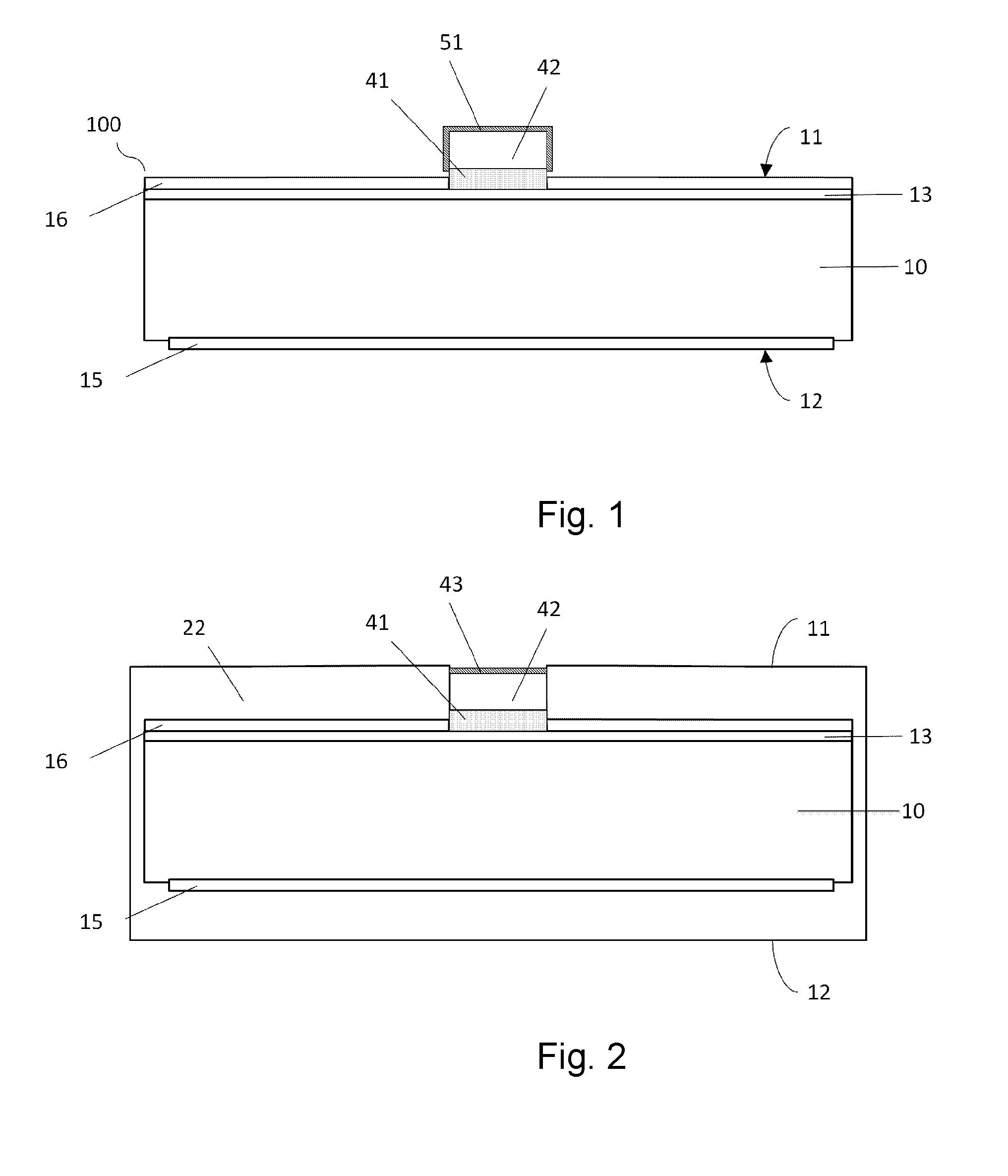Protective cover for a copper containing conductor
a protective cover and copper-containing technology, applied in the direction of photovoltaic energy generation, electrical equipment, basic electric elements, etc., can solve the problems of limited conductivity, high price, large area needed, etc., and achieve the effect of enhancing the reactivity and the deposition rate of si, minimizing process steps, and reducing the size of the protective cover
- Summary
- Abstract
- Description
- Claims
- Application Information
AI Technical Summary
Benefits of technology
Problems solved by technology
Method used
Image
Examples
second embodiment
[0053]Thereafter, a protective layer of an insulating silicon compound is formed. This is most suitably a native silicon oxide. This is suitably achieved by removal from the substrate out of the deposition chamber, or alternatively, the introduction of air into the deposition chamber. The native silicon oxide typically has a thickness in the order of 2-3 nm, for which it consumes partially any underlying excess and / or copper silicide. FIG. 2 shows a diagrammatical cross-sectional view of the invention. In this embodiment, a front side 11 and the rear side 12 are covered with an insulating mask 22a, into which a cavity is present. This cavity is filled with the interface layer (41), the copper containing conductor (42). The insulating mask 22a effectively defines an exposed surface of the conductor (42), in the sense of limiting the surface that can be exposed by means of reduction of any native copper oxide. Thereafter, this surface is exposed, for instance by atomic hydrogen in a p...
third embodiment
[0055]FIG. 3 shows a diagrammatical cross-sectional view of the invention. The shows device is again a solar cell, in this embodiment in an interdigitated back contact cell (IBC) design. A substrate 10 is provided with a front side 11 and a back side 12 having a front surface field 13 that may be textured and is covered with a passivation layer 16 that also serves as an anti-reflective coating. The back side has the emitter 82 and base 81 regions. In this case an n-type solar cell is concerned, which results in boron doped, p+ regions which form the emitter 82 and phosphorus doped n+ regions creating the base contact 81. Metal is contacting the emitter and base regions through small openings 60 of the back side passivation 17. The interface layer 41 is built up of a stack of metals, aluminium, tungsten-titanium stack. This stack provides good contact to the emitter and base regions and also serves as a barrier layer for the copper conductors 42. The copper conductor is covered by th...
PUM
| Property | Measurement | Unit |
|---|---|---|
| temperature | aaaaa | aaaaa |
| temperature | aaaaa | aaaaa |
| thickness | aaaaa | aaaaa |
Abstract
Description
Claims
Application Information
 Login to View More
Login to View More - R&D
- Intellectual Property
- Life Sciences
- Materials
- Tech Scout
- Unparalleled Data Quality
- Higher Quality Content
- 60% Fewer Hallucinations
Browse by: Latest US Patents, China's latest patents, Technical Efficacy Thesaurus, Application Domain, Technology Topic, Popular Technical Reports.
© 2025 PatSnap. All rights reserved.Legal|Privacy policy|Modern Slavery Act Transparency Statement|Sitemap|About US| Contact US: help@patsnap.com



